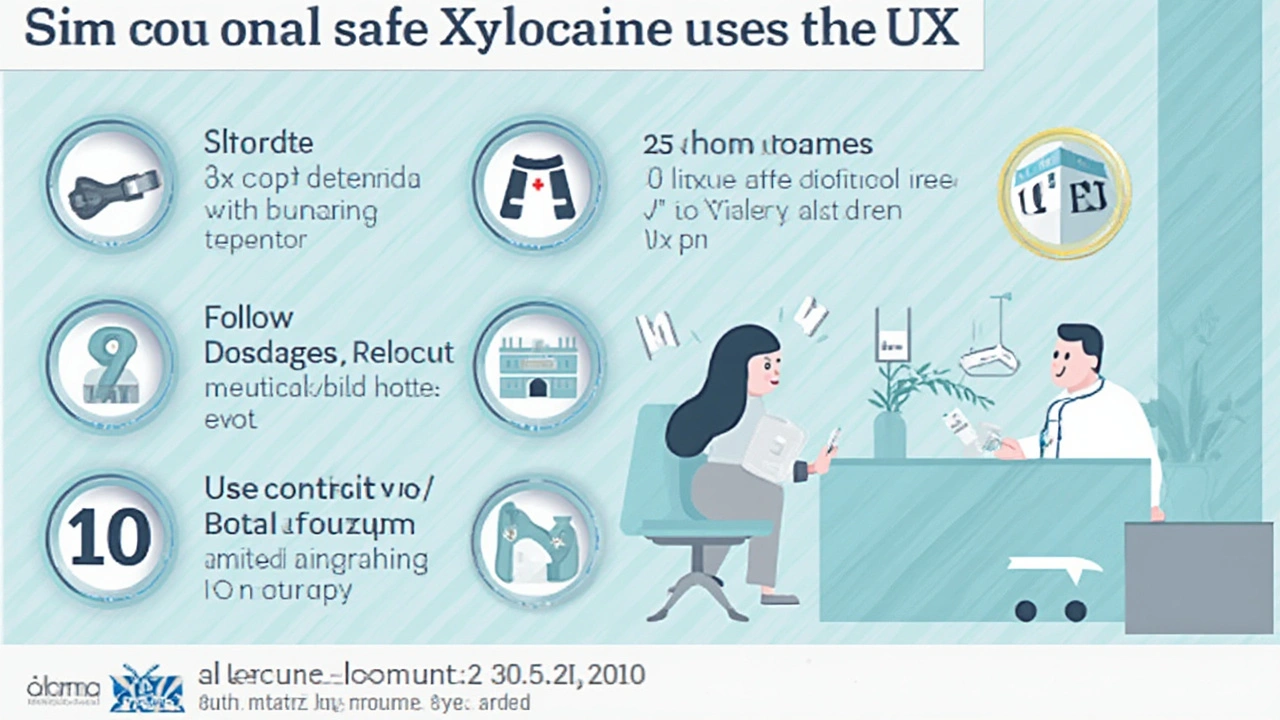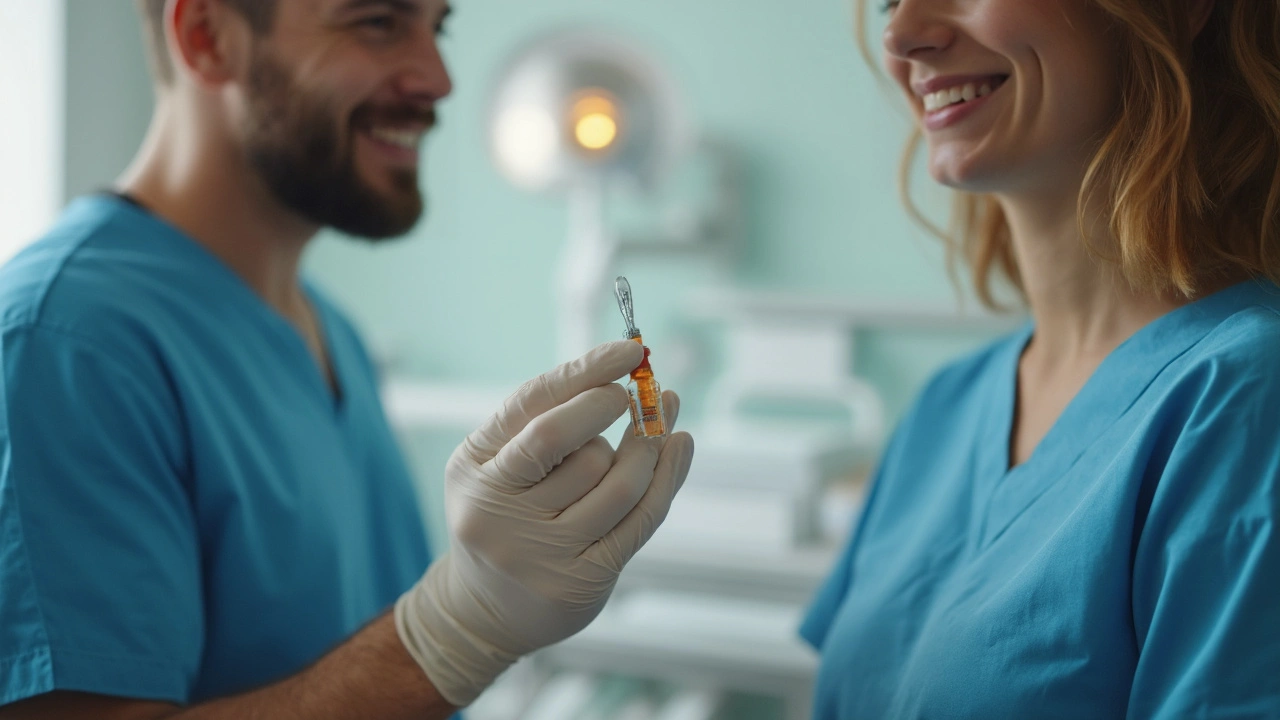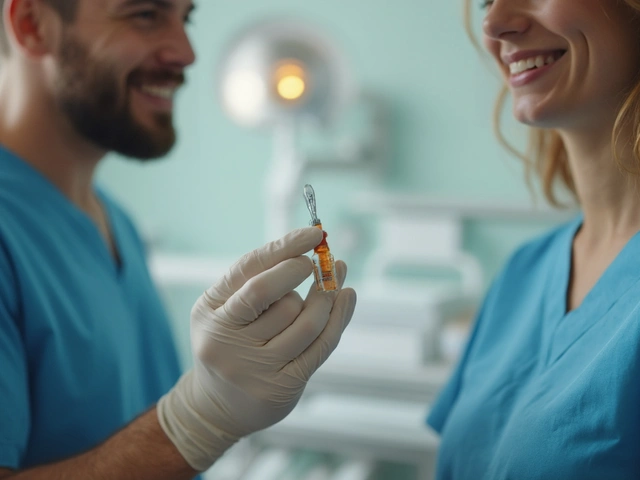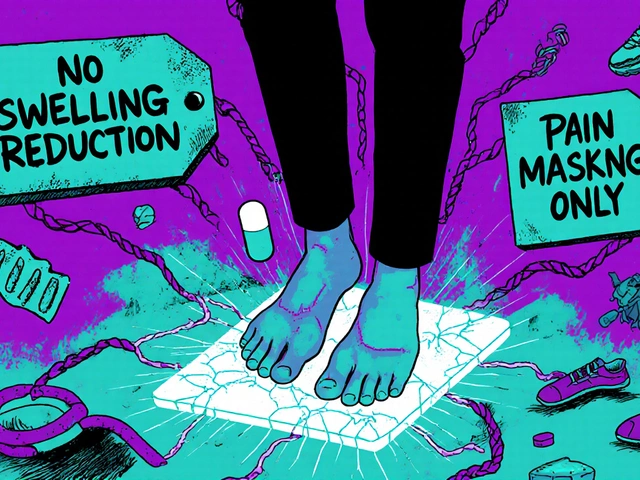You stub your toe and wince, but you know it’ll pass. Now, imagine the dentist coming at your mouth with a drill—now you need something a bit stronger than just grit. That’s where Xylocaine comes in, and honestly, it’s been a quiet hero in medicine for decades. Most people have felt that odd numbness in their gums or skin and never thought about what was behind it. But if you’ve ever had a cavity filled, stitches, or even an IV started at the hospital, this stuff has likely come to your rescue. Let’s dig into why Xylocaine matters, how it works, and what to watch for—because it’s everywhere, just hiding behind the scenes.
What Exactly Is Xylocaine and How Does It Work?
Xylocaine is the brand name for a drug called lidocaine. Maybe you’ve seen both names tossed around on the box at a pharmacy. Here’s the thing: Xylocaine is a local anesthetic, which means it temporarily blocks sensation in a specific area. It does this by shutting down the tiny electrical signals in your nerves that scream “pain!” when a doctor pokes, prods, or slices. That’s why, after you get it, you suddenly feel like your lip or arm just disappeared. Dentists use it to numb teeth, dermatologists use it before removing moles or warts, and ER docs rely on it when stitching up cuts.
Now, let’s get into a little science. Lidocaine isn’t new. Swedish chemist Nils Löfgren first cooked it up in the 1940s. Before that, doctors used cocaine—yes, the drug—for anesthesia, but that came with a pile of dangerous side effects and, you know, addiction. Lidocaine’s magic is that it stops sodium ions from entering nerve cells. No sodium, no nerve firing, no “ouch!” traveling to your brain. This happens super quick, usually taking effect in less than two minutes and lasting from 20 minutes to a couple of hours, depending on the dose and where it’s used.
What’s wild is just how many forms Xylocaine comes in: there’s injectable liquid, topical ointments, gels, sprays, patches, and even mouthwashes. If you’ve ever used a numbing throat spray or that gel dentists slap on your gums before Novocain, odds are it had lidocaine in there. Emergency medics love the stuff too—it’s fast, reliable, and handy for numbing right before starting an IV on a wiggly kid or anxious adult.
Is it just about pain? Nope. In hospitals, Xylocaine pulls double duty as an antiarrhythmic. If someone’s heart is beating way out of rhythm (think: scary heart palpitations after a heart attack), doctors can use it to hit the brakes. It calms frantic heartbeats by slowing electrical signals in the heart. Still, these days, doctors use newer drugs more often, but Xylocaine is still tucked away in code carts for emergencies.
Let’s look at a few situations where you might meet this medicine:
- Dental procedures (fillings, root canals, extractions)
- Minor skin surgeries (biopsies, mole removals, stitches)
- Painful skin conditions, including sunburns, shingles, or mouth ulcers
- IV insertions in children
- Treating irregular heartbeats (in hospital settings)
Still think it’s just a niche drug? About 95% of local anesthetic injections at dentist offices rely on xylocaine or a “cousin” molecule. That’s millions of patients every week, just getting on with life, pain-free.
| Form | Common Use | Onset | Duration |
|---|---|---|---|
| Injection | Dental work, stitches, minor surgery | 1-2 min | 20-90 min |
| Topical gel | Mouth sores, skin irritation | 2-5 min | 15-30 min |
| Spray | Throat numbing | 1-3 min | 10-15 min |
| Patch | Nerve pain (post-shingles, etc.) | 30 min | up to 12 hrs |

Why Xylocaine Is So Widely Used: Benefits and Tips
Xylocaine’s reputation comes down to how fast and dependable it is. If you’re getting a filling, nobody wants to sit around for ages waiting to go numb. Xylocaine gets down to business quickly, works almost every time, and lets you walk out of the office without the horror of feeling tools in your mouth. But there’s more to the story than just speed.
First up, Xylocaine is super versatile. Its use in so many forms means healthcare workers can tailor how strong it is and how long it lasts. A dentist might inject a concentrated shot for a long root canal, while a parent could buy a mild over-the-counter numbing gel for teething pain. Topical creams settle itchy skin, while patches help folks living with nerve pain from shingles or diabetes. Many emergency rooms keep lidocaine spray handy to numb throats before passing a breathing tube, because gagging is no fun when you can barely breathe.
Adverse reactions are rare, but let’s not gloss over the risks. Some people can be allergic, though this is actually pretty uncommon. More likely, things go south when people use too much, or when someone with heart, liver, or kidney problems gets a big dose by mistake. Classic overdose symptoms include ringing in the ears, dizziness, confusion, or a metallic taste in the mouth. If it goes really wrong, people can have seizures, pass out, or even stop breathing. Thankfully, medical staff know what to watch for and how to handle it. For regular users—like those with chronic mouth ulcers or folks putting patches on large areas—rotating application spots keeps skin from getting irritated or overly numb.
So how do you get the most out of Xylocaine’s benefits while staying safe? Here are a few tips:
- Stick to the prescribed amounts. More is not better—overdosing can be dangerous.
- Don’t use numbing gels on wide areas of broken skin, especially in kids, because it can soak in too quickly.
- If you have a history of allergies to anesthetics or unexplained bad reactions at the dentist, mention it before getting more Xylocaine.
- Look out for any weird symptoms—dizziness, racing heart, or extreme drowsiness—especially after large doses.
- Wash hands after applying creams or gels and avoid touching your eyes.
A wild fact: paramedics even use Xylocaine gel to numb the inside of the nose before putting in a breathing tube or certain wires. Animals sometimes get it at the vet, too. And if you’re dealing with chronic pain, some doctors tailor pain relief with compounded creams made in specialized pharmacies—mixing Xylocaine with other meds for a custom fit.
Xylocaine lasts on the shelf for years in a sealed vial, but once opened, it’s best used up quickly in a medical setting. If you’re getting it at home (for example, for mouth ulcers), toss old tubes by the expiration date since the active ingredient breaks down and bacteria can sneak in. As with anything, keep it high and out of sight from curious kids who might think a sweet minty gel looks like toothpaste.

Everyday Life with Xylocaine: Common Uses, Myths, and Surprises
You’d think after decades people would know pretty much everything about Xylocaine, but most folks just trust the numbing magic and move on. For anyone curious, it pays to know where you’ll meet this anesthetic and what crazy stories surround it.
If you ask, “Where will I run into Xylocaine?” The answer is honestly: everywhere. Dentists give an estimated 350 million anesthetic injections a year in the U.S. alone, with Xylocaine as the front-runner. Minor medical procedures—think: mole removals, cuts, or small biopsies—use it to prevent pain before someone takes a scalpel to your skin. It’s essential when getting stitches (nobody wants to feel the needle plus the suture). OB-GYNs use it while sewing up wounds after a baby’s birth, and dermatologists use it for laser treatments or nerve block shots for little skin surgeries. Patches get handed out for old injuries, nerve pain, or shingles flare-ups—a condition that’s painful enough to make even the toughest folks whimper.
But myths still run wild. Parents sometimes worry that Xylocaine will knock out their kid or that the numbness will “spread” uncontrollably. Not so: it only numbs where it’s put and clears the body within hours, broken down by the liver. Some believe numbing creams can fix any pain, but they really only work well for skin, mouth, or shallow nerve pain—joint and bone pain need other options.
There’s a little trick doctors use to make shots less painful: warming up the Xylocaine before injecting, or adding a pinch of baking soda to cut sting. For needle-phobic folks, doctors sometimes use a “numbing cream before the numbing shot” trick—covering the skin with lidocaine cream first, then the injection barely registers. Vets use Xylocaine gel for animal patients, from puppies to horses, with the same science as for humans. Even tattoo artists sometimes keep topical numbing solutions handy for big sessions.
People get creative: one unusual use making the rounds is for premature ejaculation, with creams or sprays applied before sex to hit pause on sensitivity—though you should definitely check with a doctor before trying that. And while home-use gels help with toothaches or teething, the FDA warns parents to skip strong numbing gels on infants because swallowing too much can hurt their oxygen levels.
If you’re a runner who blisters easily or someone prone to mouth ulcers, a dab of Xylocaine gel can be a lifesaver when it’s time to eat. But always read labels—sometimes products hide the lidocaine name even when it’s the same ingredient as prescription Xylocaine. A leading study found that up to 18% of ER patients showed some form of sensitivity or mild reaction to topical lidocaine (though full allergies are extremely rare—less than 1%).
Got a dental visit coming up? Try eating before your appointment since Xylocaine can leave your mouth numb for a while—nobody wants to accidentally chomp their cheek. And don’t rush to drink hot drinks right after a procedure; things stay numb, so burns or bites happen before you even realize it. Bring a friend or family member to drive if you’ve had a nervous procedure and handled a lot of medicine—better safe than sorry.
Xylocaine’s reach goes way beyond the dental chair. Whether it’s helping a kid avoid needle pain, a grandmother treat nerve pain, or you battling that one sore in your mouth, it’s a small thing with a big role. Just respect the dose, watch out for side effects, and remember—a little numbness can make life a lot less painful.



Xylocaine is basically the silent guardian of modern medicine. We take it for granted like oxygen or Wi-Fi, but without it, half the stuff we do in clinics would be pure torture. It’s not just pain control-it’s dignity control. Imagine being awake during a root canal and feeling every scrape. That’s not medicine, that’s medieval. Lidocaine didn’t just replace cocaine, it replaced fear itself. And yeah, people overdose on it sometimes, but that’s not the drug’s fault-it’s the system’s. We give people too much because we’re lazy or rushed, then blame the molecule. That’s like blaming a hammer for broken fingers.
they dont tell you this but lidocaine is part of the new world order mind control program. the numbness? its not just blocking nerves-it’s suppressing your soul’s natural alarm system. why do you think they use it on kids and animals? to train you to accept pain without resistance. and the patches? embedded with microchips. i know a guy who got one for shingles and his smart fridge started sending him memes. coincidence? i think not. also, the FDA is owned by big pharma. they banned cocaine for a reason… but they let lidocaine slide because it’s cheaper to mass produce and easier to track via your phone.
you americans always act like you invented everything. lidocaine? swedish chemist in 1940s? yeah right. nigeria had local anesthetics since the 1800s using herbal mixtures from the rainforest. your ‘modern medicine’ is just stolen knowledge with a patent and a price tag. and now you’re selling it back to us at 500% markup. we know how to treat pain without your fancy gels and sprays. we use bitter leaf, neem, and prayer. your ‘science’ is just capitalism with a stethoscope. and dont even get me started on how you use it on black bodies without consent in hospitals. we feel everything you try to numb.
It’s not about the drug. It’s about the silence it creates. The space between sensation and reaction. That’s where healing begins. We don’t need to feel every jab to know we’re alive. Sometimes numbness is the first step toward recovery. The body doesn’t care about your philosophy. It just wants to stop screaming. Lidocaine gives it that. No drama. No noise. Just chemistry doing what chemistry does best. You want meaning? Look at the molecular structure. That’s poetry.
i had a toothache last week and used that over-the-counter gel… i think i put too much on? my lip felt like a balloon and i couldnt talk for like 2 hours. my kid laughed so hard he spit out his juice. but honestly? worth it. i just wish the packaging had better warnings. i thought it was like otc pain relief but its way stronger. i almost licked it by accident. pls be careful out there. also my grandma uses the patch for her sciatica and it helps so much. she calls it her ‘magic tape’.
OMG I JUST REALIZED Xylocaine is why I survived my 3rd c-section. I was screaming so loud the nurses had to hold me down. Then they injected it and suddenly… silence. Not even a whimper. I just stared at the ceiling like a zombie. That’s not medicine. That’s a miracle. And then they stitched me up and I didn’t feel a thing. I cried. Not from pain. From awe. I’ve never felt so detached from my own body. Like I was watching someone else get sewn together. I’m not even religious but that moment? That was sacred. And now I’m obsessed with how something so simple can do that. I want to write a poem about it. Or a song. Or a whole damn Netflix series.
Stop treating this like a drug. Treat it like a tool. Like a hammer. Like a knife. You don’t blame the tool when someone gets hurt-you blame the person holding it. Xylocaine is not the problem. Overuse is. Ignorance is. Lazy doctors are. We need education not fear. Get trained. Use it right. Save lives. My cousin in Delhi got a burn treated with lidocaine cream and walked out pain-free in 20 minutes. No hospital. No bill. Just a tube and some common sense. This isn’t magic. It’s science. And science is for everyone. Not just rich countries. Not just white people. Everyone. Use it. Respect it. Don’t fear it.
Reading this made me think about how many invisible things keep us from falling apart. Xylocaine isn’t flashy. No ads. No influencers. Just quiet, reliable numbness. I used to hate needles. Like, full panic attacks. Then I found out they put numbing cream on first. That little step changed everything. I still hate the poke, but I don’t cry anymore. I just breathe. And I’m grateful. Not for the science. For the care. Someone thought: ‘This person is scared. Let’s make it easier.’ That’s the real hero here. Not the molecule. The humanity behind it.